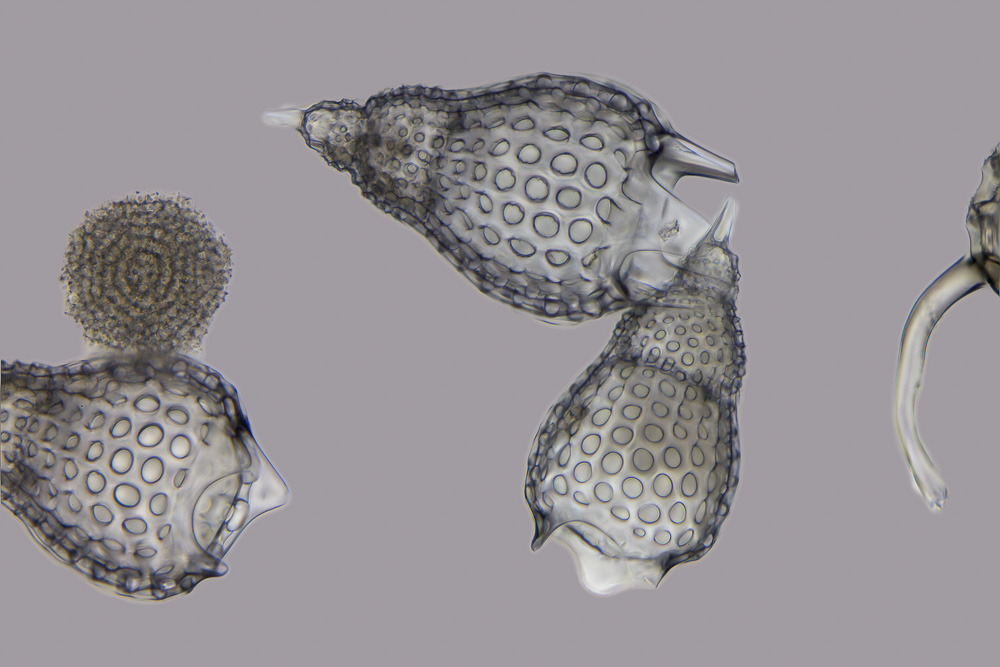|
Sticholonchea
''Sticholonche'' is a genus of radiolarians with a single species, ''Sticholonche zanclea'', found in open oceans at depths of 99–510 metres. It is generally considered a heliozoan, placed in its own order, called the Taxopodida. However it has also been classified as an unusual radiolarian, and this has gained support from genetic studies, which place it near the Acantharea. ''Sticholonche'' are usually around 200 μm, though this varies considerably, and have a bilaterally symmetric shape, somewhat flattened and widened at the front. The axopods are arranged into distinct rows, six of which lie in a dorsal groove and are rigid, and the rest of which are mobile. These are used primarily for buoyancy, rather than feeding. They also have fourteen groups of prominent spines, and many smaller spicule Spicules are any of various small needle-like anatomical structures occurring in organisms Spicule may also refer to: *Spicule (sponge), small skeletal elements of sea sponges ... [...More Info...] [...Related Items...] OR: [Wikipedia] [Google] [Baidu] |
Radiolarian Genera
The Radiolaria, also called Radiozoa, are protozoa of diameter 0.1–0.2 mm that produce intricate mineral skeletons, typically with a central capsule dividing the cell into the inner and outer portions of endoplasm and ectoplasm. The elaborate mineral skeleton is usually made of silica. They are found as zooplankton throughout the global ocean. As zooplankton, radiolarians are primarily heterotrophic, but many have photosynthetic endosymbionts and are, therefore, considered mixotrophs. The skeletal remains of some types of radiolarians make up a large part of the cover of the ocean floor as siliceous ooze. Due to their rapid change as species and intricate skeletons, radiolarians represent an important diagnostic fossil found from the Cambrian onwards. Description Radiolarians have many needle-like pseudopods supported by bundles of microtubules, which aid in the radiolarian's buoyancy. The cell nucleus and most other organelles are in the endoplasm, while the ectopla ... [...More Info...] [...Related Items...] OR: [Wikipedia] [Google] [Baidu] |
